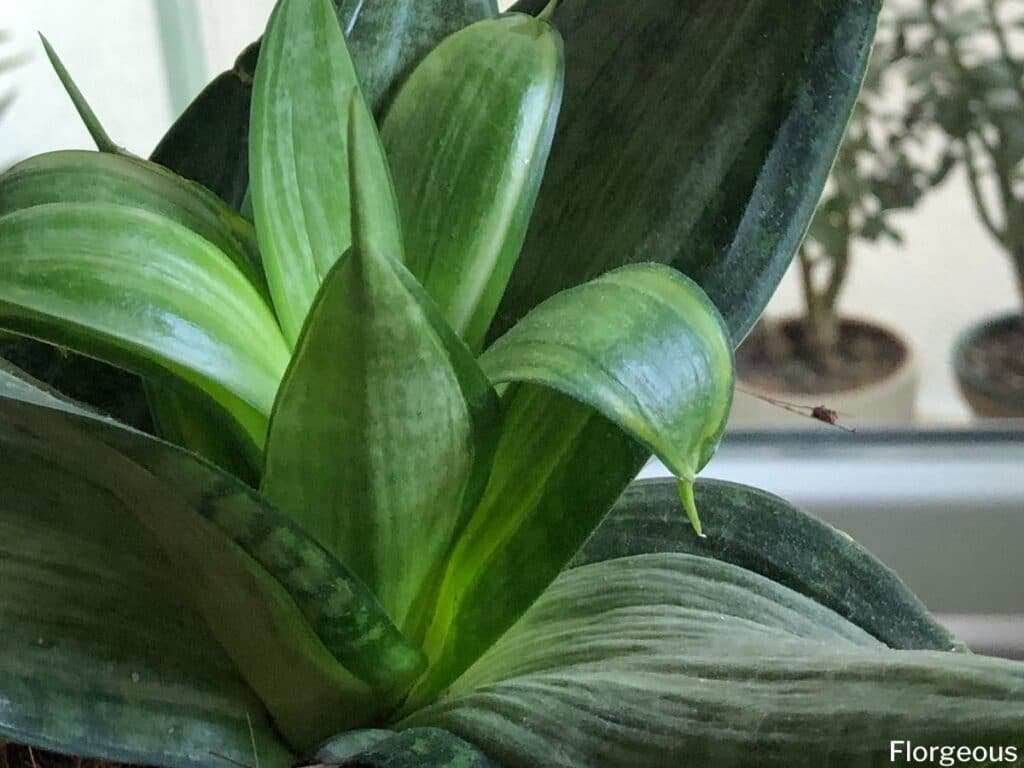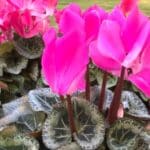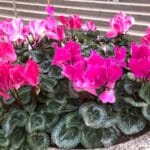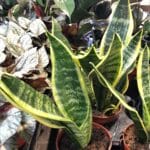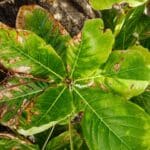Just about everyone has heard of the snake plant. These hardy perennials are really easy to care for and provide long-lasting color, texture, and beauty wherever they are grown.
However, many of you might not realize that there are several different types of these excellent indoor plants that can be collected.
Once you know how to care for a snake plant, read our list below to learn more about some fantastic snake plant varieties that you can start growing in your home.
Dracaena trifasciata
D. trifasciata is the most popular snake plant species in cultivation. Up until very recently, the species was known as Sansevieria trifasciata and is still commonly referred to by this name by many growers.
This snake plant variety is native to the equatorial region of West Africa but is now found thriving in containers and gardens throughout the world. It has been developed into several attractive cultivars. The following options are all known to make wonderful houseplants.
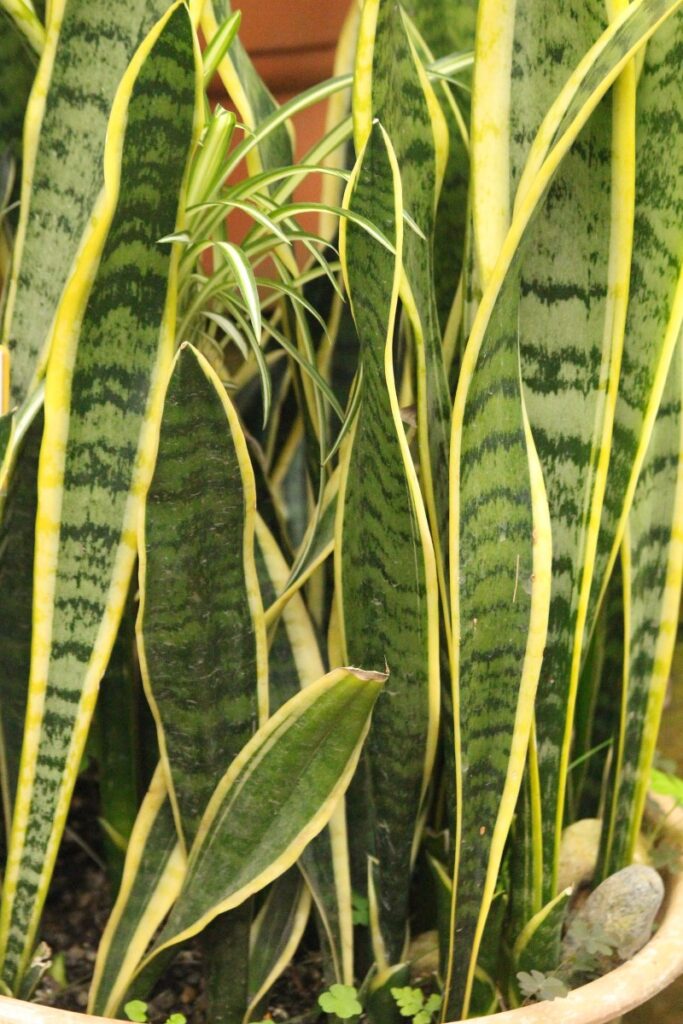
S. trifasciata ‘MoonShine’
This attractive snake plant cultivar has relatively broad leaves that can reach about 4 inches (10cm) across. With a height of about 2 feet (0.6m), it does not grow particularly tall, creating a dense, leafy-looking specimen.
The silvery green leaves that is accentuated by thin dark green margins and light bands. This plant works perfectly in both dark and light-colored pots for indoor setup. They will survive in lower light but may turn very dark green leaves under these conditions.
S. trifasciata ‘Laurentii’
This popular cultivar is commonly known as the variegated snake plant. It is probably the most recognizable snake plant, exhibiting sword leaves in alternating bands of light and dark green with yellow margins.
‘Laurentii’ reaches a height of a little over 2 feet (0.6m) when grown indoors, although it can grow to nearly twice this size when grown outdoors in ideal conditions. Like other plants in this group, it is slow-growing and easy to care for, making it a wonderful low-maintenance houseplant.
S. trifasciata ‘Golden Hahnii’
This species, also known as the bird’s nest snake plant, looks just like ‘Laurentii’ except that the leaves are shorter and the yellow margin is thicker and runs throughout the underside of the leaves. This is a great choice for growers who want a more compact snake plant as this trifasciata hahnii reaches just 8 inches (0.2m) or so in height.
S. trifasciata ‘Black Robusta’
Another striking new addition, this sansevieria trifasciata black robusta boasts darker green, almost black glossy leaves. Upon closer inspection, bright green bands cover both sides of the leaves.
Sansevieria kirkii/ Dracaena pethera
This species is commonly known as the star sansevieria. This plant occurs widely in Eastern and Southern Africa (1).
S. kirkii ‘Coppertone’
A relatively new and rare cultivar, this snake plant has striking shiny copper-colored wide leaves with green bands. The leaves are curled on the edges and are gathered in a rosette form. It is a relatively low-growing snake plant that has a flattened growth form. The leaves grow to a little less than a foot long under good conditions.
Sansevieria ehrenbergii/ Dracaena hanningtonii
This species is commonly known as the blue or sword sansevieria. It grows wild from Saudi Arabia in West Asia to Tanzania in East Africa (2). It is a fairly large species that can grow to about 5 feet (1.5m) tall. The leaves grow in an attractive fan shape, rather than the typical rosette form.
Sansevieria ‘Rorida’
Reported as the most expensive snake plant of 2019, this slow-growing cultivar of S. ehrenbergii has fan-shaped downward-curving stubby leaves growing on top of one another. The leaves are green and unlike most snake plants, the dark bands are thin and parallel to the midrib. It is a much more compact form than the wild species.
Sansevieria patens
This East African species can reach a height of about 3 feet (0.9m) (3). It is a unique succulent type of snake plant with stubby pointed deep green foliage that are initially arranged in a rosette form and then arch in different directions as the plant matures. This snake plant thrives indoors in bright, indirect lighting.
Sansevieria cylindrica
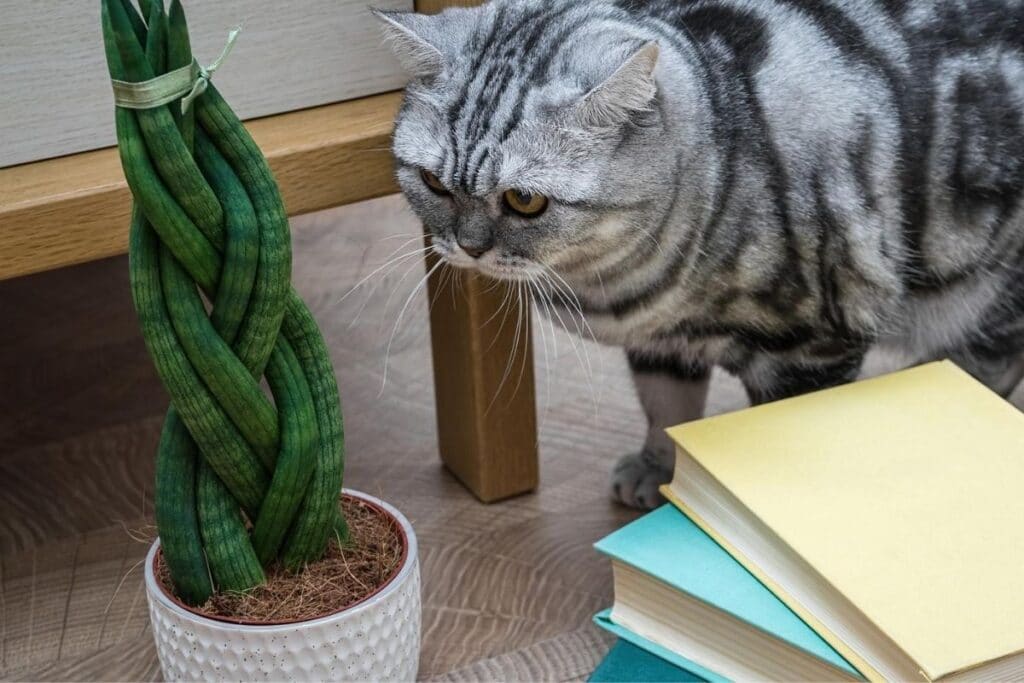
This plant is commonly known as the cylindrical snake plant or African spear plant. The long tubular leaves in different shades of green fan out from the base of the cylindrical snake plant. It is a large species that can reach nearly 7ft (2m) long when grown outdoors. Indoors, however, they look striking in pots with a manageable height of 12-16 inches (0.3-0.4m).
Sansevieria zeylanica
The original ‘mother-in-law’s tongue’, this plant has long sword shaped leaves with alternating irregular bands of dark and light shades of green. These snake plants require little maintenance and thrive in bright but indirect light conditions.
Sansevieria masoniana
The Shark Fin Snake Plant (Sansevieria masoniana) stands out with its visually striking appearance, characterized by its tall and sturdy cylindrical leaves that bear a remarkable resemblance to the dorsal fin of a shark.
Each leaf is broad and paddle-shaped, gradually tapering to a point at the tip, giving it a sleek and elegant silhouette. The leaves are a vibrant shade of green with distinct mottling or banding patterns that vary from light to dark hues, adding depth and texture to the plant’s overall aesthetic.
Dracaena ballyi
Dracaena ballyi, commonly known as Bally’s Dracaena or Dwarf Dracaena, is a unique variety of snake plant prized for its compact size and attractive appearance. This dwarf snake plant features slender, upright stems adorned with clusters of sword-shaped leaves arranged in a rosette formation. The leaves are glossy green with yellow-green stripes or margins, adding a touch of color and elegance to indoor spaces.
Dracaena ballyi is well-suited to low-light conditions and requires minimal maintenance, making it an excellent choice for beginners and plant enthusiasts seeking a versatile and visually appealing plant for their home or office.
Sansevieria trifasciata ‘Metallica’
Sansevieria trifasciata “Metallica,” also known as Metallica Snake Plant or simply Metallica, is a captivating variety of snake plant esteemed for its stunning metallic sheen and robust growth habit.
This plant boasts tall, upright leaves with a distinctive cylindrical shape and a glossy texture. The foliage showcases shades of dark green with horizontal bands of silver-gray or metallic hues, lending it a striking and modern appearance. Additionally, when mature, it produces delicate white blooms that add a touch of elegance to its overall allure.
Dracaena trifasciata Gold Flame
Sansevieria Trifasciata Golden Flame is a captivating variety of snake plant prized for its striking foliage and vibrant coloration. This cultivar features tall, sword-shaped leaves with bold yellow-green centers that transition to rich green edges, creating a dramatic contrast.
The foliage is adorned with irregular bands or stripes of golden-yellow, giving it a fiery and dynamic appearance. ‘Gold Flame’ is a compact and low-maintenance plant, making it ideal for both indoor and outdoor settings.
Sansevieria trifasciata Futura Superba
The Sansevieria trifasciata Futura Superba, also known as the cylindrica Futura Superba, is a popular variety of snake plant prized for its architectural form. Its stiff, upright leaves are cylindrical and a deep green with lighter green bands running horizontally across the surface.
This low-maintenance succulent is known for its air-purifying properties and tolerates neglect, making it a great choice for both beginner and seasoned plant owners.
FAQs
What is the difference between snake plant and Sansevieria?
There is no difference between the two—they refer to the same species. The term “snake plant” is commonly used as a nickname for Sansevieria due to its long, upright leaves resembling snake patterns.
Can snake plants live without sunlight?
Yes. Snake plants are known for their resilience and ability to tolerate low light conditions. While they thrive in bright, indirect light, they can survive in low-light environments.
What is the most common snake plant variety?
The Sansevieria trifasciata (commonly known as the snake plant or mother-in-law’s tongue) is the most widespread and recognizable variety. It features tall, light green leaves.
What is a rare snake plant?
One of the rarer snake plant varieties is the Sansevieria cylindrica, also known as the cylindrical snake plant, ansevieria cylindrica var. or African spear plant. It has cylindrical, upright leaves that resemble spears and is less common than the traditional snake plant.
Conclusion
While this guide is by no means exhaustive, it does give you a good idea of the diversity of many varieties of snake plants. If you don’t already have these snake plant varieties in your collection and are considering growing one, you certainly won’t be disappointed.
See more:

